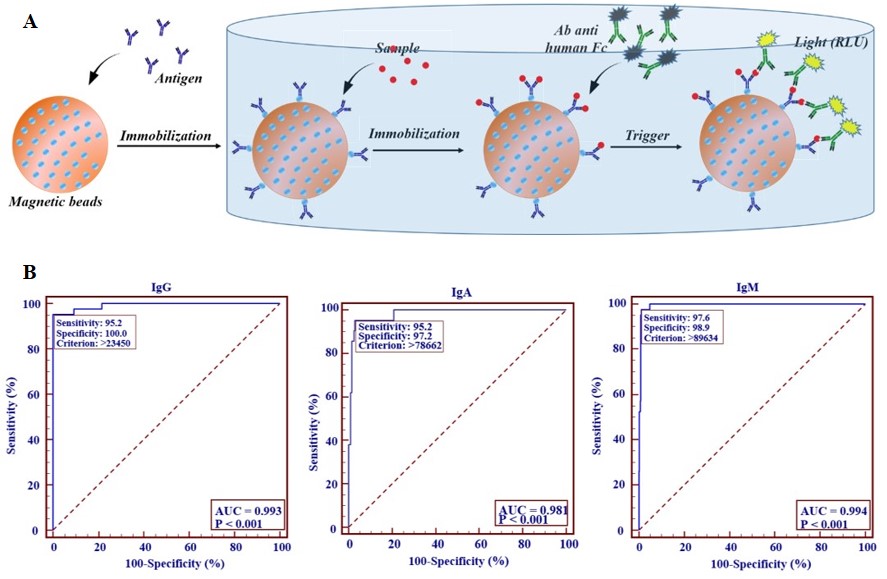Detection of Circulating VZV-Glycoprotein E-Specific Antibodies by Chemiluminescent Immunoassay (CLIA) for Varicella-Zoster Diagnosis
KOMBE KOMBE A,J,. et al.’s new published article entitled “Detection of Circulating VZV-Glycoprotein E-Specific Antibodies by Chemiluminescent Immunoassay (CLIA) for Varicella-Zoster Diagnosis”, was accepted on November 23, 2021 in Pathogens, and became available online since January 5th 2022 (https://www.mdpi.com/2076-0817/11/1/66).
Professors Jin Tengchuan and Siping Zhang are the corresponding authors.
Keywords: IgA; IgG; IgM; chemiluminescaent immunoassay (CLIA); diagnostic test; varicella–zoster virus (VZV).
Varicella and herpes zoster are mild symptoms-associated diseases caused by varicella-zoster virus (VZV). They often cause severe complications (disseminated zoster), leading to death when diagnoses and treatment are delayed. However, most commercial VZV diagnostic tests have low sensitivity, and the most sensitive tests are unevenly available worldwide. Here, we developed and validated a highly sensitive VZV diagnostic kit based on the chemiluminescent immunoassay (CLIA) approach. The VZV-glycoprotein E (gE) was used to develop the CLIA-based diagnostic approach for detecting VZV-specific IgA, IgG, and IgM. The developed kit was assessed and validated using blood sample from confirmed VZV-patients, alongside with negative samples, used as controls. The diagnostic kits showed high detection performance, reaching sensitivities of 95.2%, 95.2%, and 97.6% and specificities of 98.0%, 100%, and 98.9% for the detection of VZV-gE-specific IgA, IgG, and IgM, respectively. Combining IgM to IgG and IgA detection improved diagnostic accuracy, reaching a sensitivity, specificity, and an overall agreement of 97.62%, 100%, and 99.80%, respectively. This developed diagnostic approach was able to detect low titer of immunoglobulins in VZV-patients, thus over performed ELISA used as a gold standard. Therefore, because this CLIA-based VZV immunoglobulin detection kit is simple, automated, and suitable for high-throughput routine analysis situations, it can help in reducing VZV infection and associated complication.

Principe of the CLIA-based diagnostic methodology through an automate and diagnostic performance of VZV-gE specific IgG, IgA, and IgM CLIA-based detection kits.

